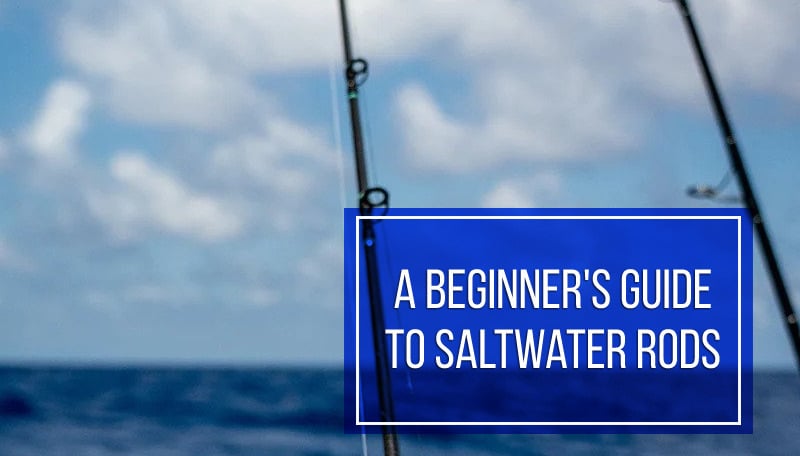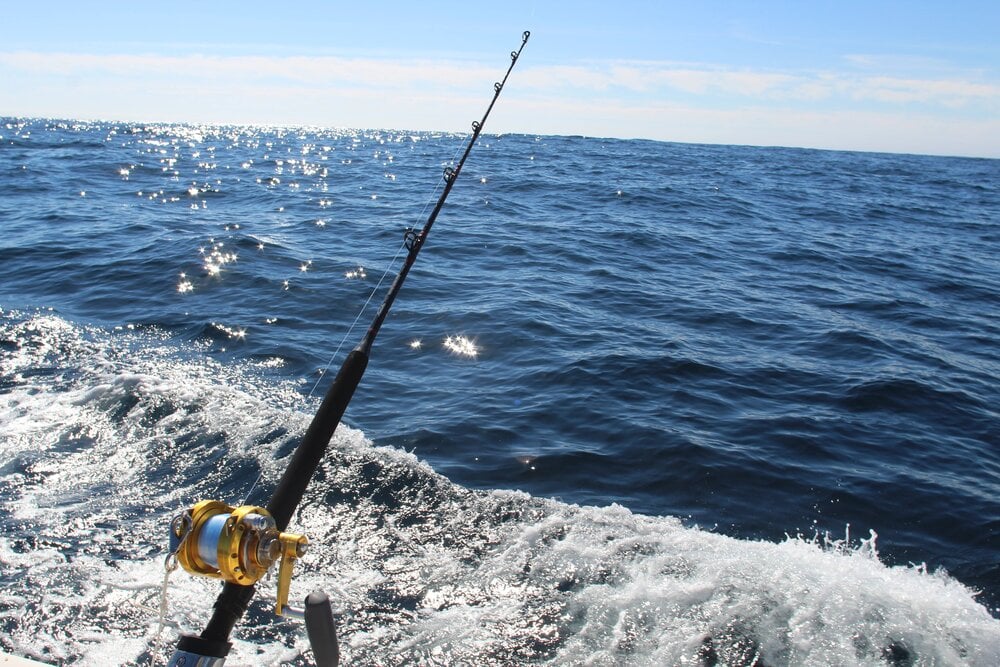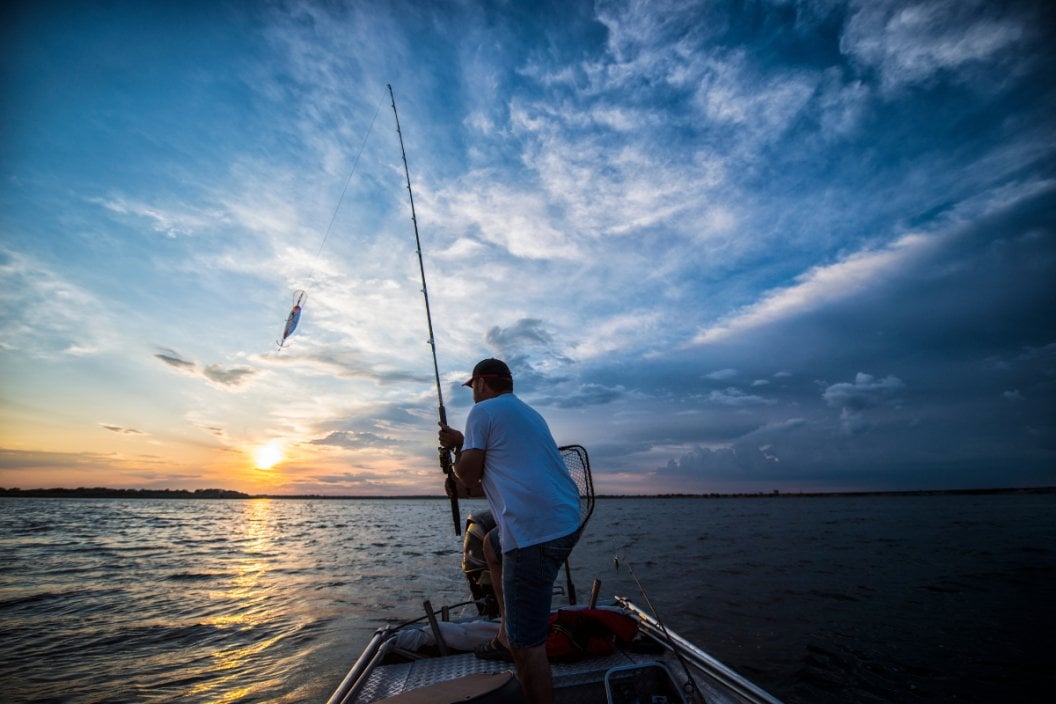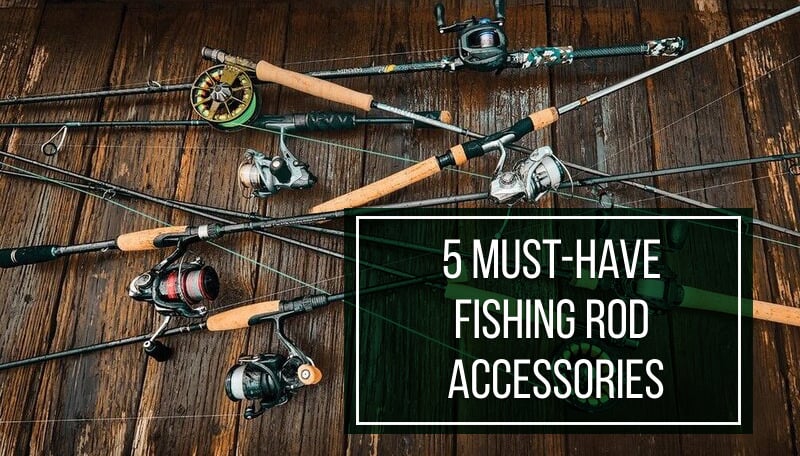Last Updated on
So you’ve decided to dip your toes into salt water for a change. Or maybe this is where your angling journey begins. Regardless, welcome to the world of saltwater fishing. Excellent choice! There are plenty of fish in the sea, as they say, and with this guide, you’ll be one step closer to catching them. But before you head out to cast your line, it’s essential to understand the specifics of your primary tools: saltwater rods.
Table of Contents
The Differences Exposed
Key Characteristics
Rod Material
Type of Rod Action
Rod Power
Rod Length
Maintenance Tips
Conclusion
FAQs
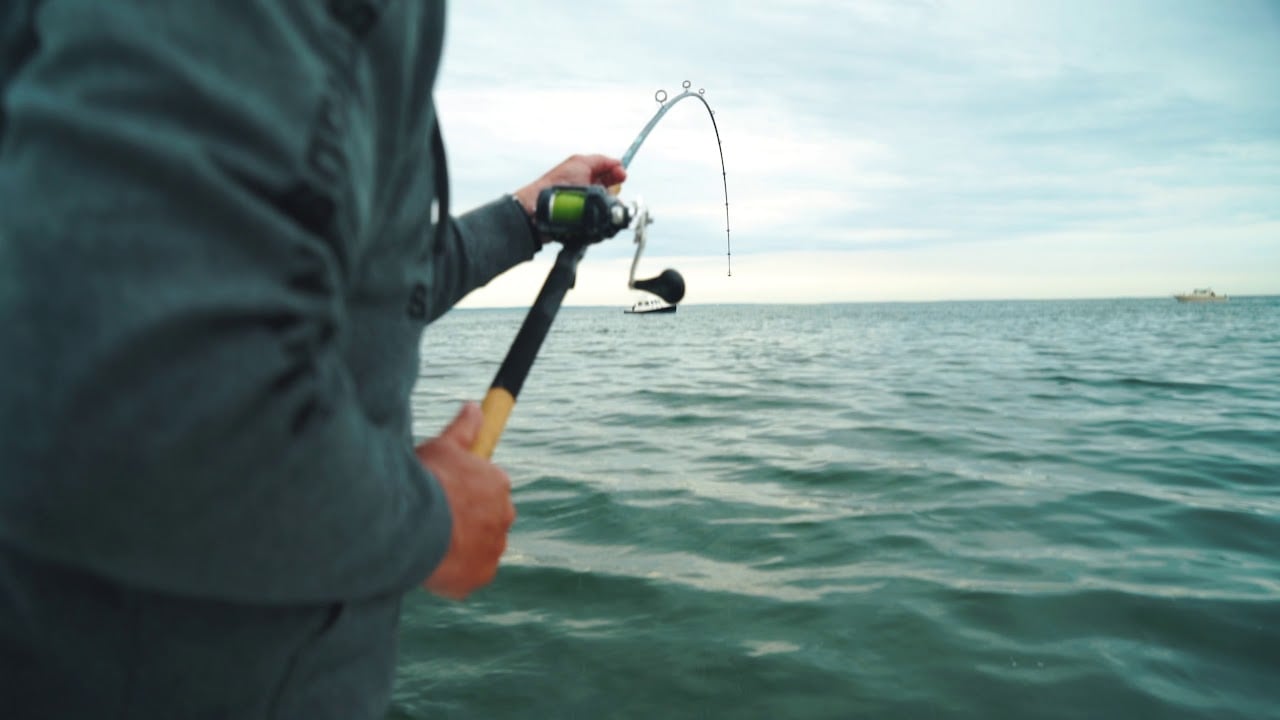
How Are Saltwater Rods Different?
Do I really need a dedicated rod, you might wonder. The answer is you’ll benefit greatly from owning one. Saltwater fishing rods are specifically designed to tackle the challenges of saltwater environments. First, they are built to be more corrosion-resistant than their freshwater counterparts. Salt water can be pretty harsh on your gear, so an extra line of defense is never superfluous. Additionally, saltwater fish tend to be larger and more aggressive, so these rods have to be stronger and stiffer to handle the extra weight and force. In short, using a dedicated saltwater rod will ensure that you’re well-prepared for your saltwater angling adventure.
Key Characteristics
Now that we know why saltwater rods are essential, let’s dive into the key characteristics that determine their performance. We’ll cover rod material, type of rod action, rod power, and rod length, providing definitions, explanations, and examples for each feature.
Rod Material
The material should be the first aspect you consider when choosing a rod. The three most common materials are fiberglass, graphite, and composite.
Fiberglass: This is the most widely used material for saltwater rods. Fiberglass rods boast superior robustness but are also flexible enough to adapt to various styles of fishing and not break under the weight of bigger fish. These rods can withstand rough seas and boat abuse better than other types. However, they are not without drawbacks: increased durability means they are heavier than regular rods, which makes it harder to detect subtle strikes or bait pickups. It’s a sturdy option that lacks the sensitivity of more brittle rods.
Graphite: Graphite rods are lighter and more sensitive than fiberglass. They will deliver the message of even the slightest nibble directly to the angler. They’re also generally stiffer, which grants them more power for casting and fighting fish. But, as you can guess, these rods are frail when compared to fiberglass ones. They are prone to breaking under extreme stress but perform astoundingly well when smaller fish are involved.
Composite: Composite rods are made from a combination of fiberglass and graphite and try to take the best of both worlds. They provide a balance of strength, durability, and sensitivity, making them the most versatile choice for various saltwater fishing situations.
Type of Rod Action
Rod action refers to how much or how far down the blank the rod bends when pressure is applied. It’s not weak vs. strong or bad vs. good opposition. You’d want different actions for different fishing scenarios. The three main types of actions are slow, medium and fast. There are also many variations of fast action like medium fast or extra fast.
Slow: Slow action rods bend throughout their entire length, providing a smooth and even bend. They’re great for casting lighter lures and for more delicate presentations but may lack the power needed for larger fish. The more pronounced bend allows the rod to accumulate more energy, resulting in longer casts.
Medium: Also known as moderate action, these rods bend through the middle portion of the rod. They offer a good balance of casting distance and power, making them suitable for a range of saltwater applications. Jack of all trades of the fishing rod world, if you may, but master of none nonetheless.
Fast: Fast action rods bend primarily at the tip, providing excellent sensitivity and quick hooksets. They are stiffer than slow action rods and grant more power when fighting big fish. However, they aren’t optimal for catching smaller fish. However, if you need casting accuracy, fast and extra-fast action rods are the best candidates for the job.
Rod Power
Rod power refers to the strength or lifting capacity of the rod, which determines its ability to handle different line weights and lure sizes. It is typically classified as ultra-light, light, medium, medium-heavy, heavy, and extra-heavy.
When selecting a rod power, it’s essential to consider the size of the fish you’ll be targeting and the tackle you’ll be using. For instance, if you’re targeting smaller species like flounder, a light to medium power rod will suffice. However, for larger species like tarpon or amberjack, you’ll need a heavy or extra-heavy power rod to handle the strength and weight of these powerful fish.
The right rod power can also affect the casting distance and accuracy, as well as the sensitivity of the rod. A lighter power rod will generally provide better sensitivity, allowing you to detect subtle bites more easily. On the other hand, a heavier power rod will give you the backbone needed to set the hook on large, hard-fighting fish effectively.
Rod Length
Rod length should be chosen based on your fishing style. Generally, saltwater rods range from 6 to 12 feet in length, with each length offering specific advantages and disadvantages.
Longer Rods (9-12 feet)
Longer rods, typically between 9 and 12 feet, are ideal for increased casting distance. This added length allows you to cast further, covering more water and potentially reaching fish that are farther away from the shore or boat. Longer rods also provide better shock absorption when fighting large, powerful fish, reducing the risk of breaking the line or losing the fish.
However, longer rods can be challenging to handle, especially for beginners. They’re often heavier and require more effort to cast accurately. Additionally, longer rods can be cumbersome in tight spaces, such as on crowded piers or boats.
Medium-Length Rods (7-9 feet)
Medium-length rods, ranging from 7 to 9 feet, offer a balance between casting distance and control. These rods are versatile and suitable for various saltwater fishing techniques, including surfcasting, inshore fishing, and nearshore fishing. They’re easier to handle than longer rods, making them a popular choice among anglers of all skill levels.
Shorter Rods (6-7 feet)
Shorter rods, usually between 6 and 7 feet, provide greater leverage and power when fighting fish. These rods are ideal for trolling, jigging, and stand-up fishing, where you need the strength to battle large, hard-fighting fish. Shorter rods also offer better accuracy and control during casting and are generally lighter, making them less tiring to use throughout a day of fishing.
Maintenance Tips
Getting a fishing rod is the quickest part of the deal. After that, you’ll need to ensure it can serve you more than a couple of uses. Taking care of your saltwater rod is the best way to do so. Here are a few tips to help you keep it in good condition:
Rinse with fresh water: After each use, rinse your rod thoroughly with fresh water to remove any salt, sand, or debris that could accelerate corrosion or become a premise for further damage.
Inspect for damage: Regularly check your rod and guides for any signs of cracks, scratches, or other damage. Address any issues promptly to prevent your rod from deteriorating.
Clean and lubricate reel seat: Keep the reel seat clean and free of debris by occasionally removing the reel and wiping down the area. Apply a light coat of corrosion-inhibiting lubricant to keep it functioning smoothly.
Store properly: When not in use, store your rod in a cool, dry place away from direct sunlight. Use a rod rack or holder to keep it off the ground and protect it from accidental damage.
Conclusion
And thus concludes our brief rip into the saltwater fishing rod department. Even though many aspects can be applied to rods for other styles of fishing, saltwater tools do have their distinctive character. The environment and target species are to thank for that. Remember: your rod assembly is your most trustworthy ally in fishing, and thus should be chosen and treated with care. It will return your kindness ten folds.
FAQs
What is the difference between saltwater and freshwater fishing rods?
The main difference between saltwater and freshwater fishing rods is in materials and durability. Saltwater rods boast higher corrosion resistance and increased sturdiness as the fish tend to be larger and more aggressive. Freshwater rods may not hold up as well in saltwater conditions and if they do, their performance is bound to decrease after prolonged contact with salty water.
Can I use a freshwater reel in saltwater?
Freshwater reels are very likely to start corroding after a while, as they’re not built to withstand the saltwater environment. For this reason, it’s crucial not only to get a saltwater fishing rod but obtain a whole saltwater fishing setup.
What are the best saltwater game fish species?
The most popular and sought-after saltwater game fish species include Marlin (Blue, Black, and Striped), Sailfish, Yellowfin and Bluefin Tuna, Tarpon, Mahi-Mahi (Dolphinfish), Wahoo, Giant Trevally, Roosterfish and Amberjack. These species are known for their fighting abilities, size, and the challenge they present to anglers.
